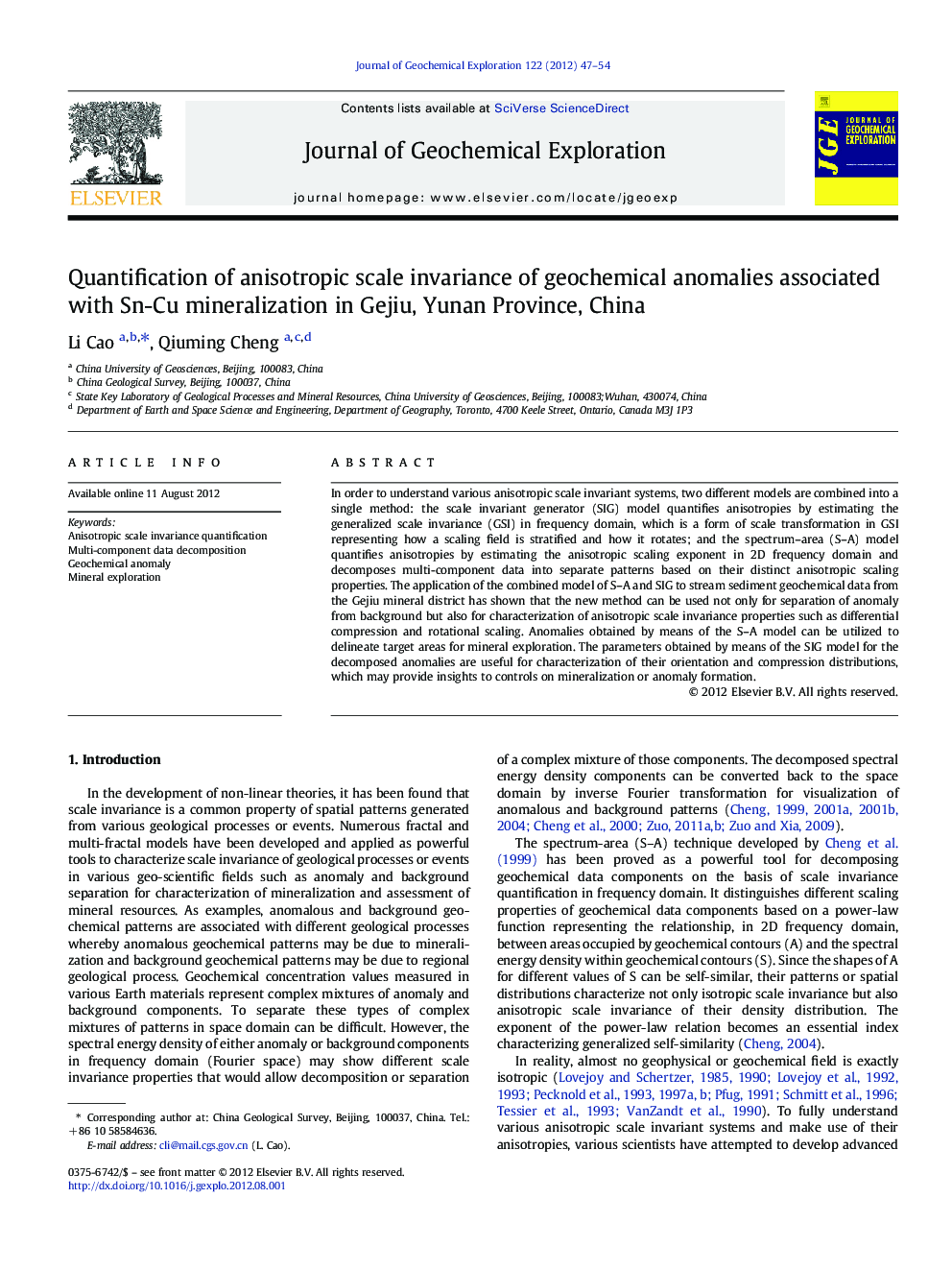| Article ID | Journal | Published Year | Pages | File Type |
|---|---|---|---|---|
| 4457707 | Journal of Geochemical Exploration | 2012 | 8 Pages |
In order to understand various anisotropic scale invariant systems, two different models are combined into a single method: the scale invariant generator (SIG) model quantifies anisotropies by estimating the generalized scale invariance (GSI) in frequency domain, which is a form of scale transformation in GSI representing how a scaling field is stratified and how it rotates; and the spectrum–area (S–A) model quantifies anisotropies by estimating the anisotropic scaling exponent in 2D frequency domain and decomposes multi-component data into separate patterns based on their distinct anisotropic scaling properties. The application of the combined model of S–A and SIG to stream sediment geochemical data from the Gejiu mineral district has shown that the new method can be used not only for separation of anomaly from background but also for characterization of anisotropic scale invariance properties such as differential compression and rotational scaling. Anomalies obtained by means of the S–A model can be utilized to delineate target areas for mineral exploration. The parameters obtained by means of the SIG model for the decomposed anomalies are useful for characterization of their orientation and compression distributions, which may provide insights to controls on mineralization or anomaly formation.
► Combination of spectrum-area and scale invariant generator techniques. ► Geochemical data is decomposed into anomaly and background patterns. ► Anisotropic scale invariance of anomalies can be quantified. ► Orientation and degree of rotation and compress of anomalies can be quantified. ► Mineralization or geological process is better understood.
